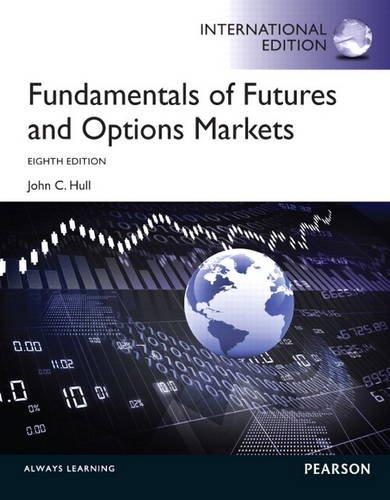(Click on the following icon in order to copy its contents into a spreadsheet.) d. From the graph you chose in part c, which of the following statements best detcribes the nature of the relationship between Citigroup stock returns and the returns for the S\&P 500 Index? (Select the best choice below.) A. Citigroup returns are Derfectly negatively correlated to the S\&P 500 Index returns. When the stock market rises 1 percent, Citigroup's c. The graphs below illustrate the relationship between the Citigroup stock returns shown on the vertical axis and the S\&P 500 Index returns shown on the horizontal axis, Which of the following graphs correctly shows the characteristic line that best fits the monthly returns of the S\&P 500 Index and Citigroup? (Note that you can click the magnifying glass button to enlarge the graphs.) (Select the best choice below.) A. c. D. (Expected roturn, standard deviation, and the capital asset pricing modef) You have been provided the prices for Citigroup and the S8P 500 Index in the popup window, a. Calculate the monthly holding-period returns for Citigroup and the S8P 500 index b. What are the average monthly returns and standard deviations for each? c. Graph the Citigroup returns against the S\&P 500 Index returns. Show the Citgroup returns on the vertical axis and the S\&P 500 Index returns on the horizontal axis. d. From your graph, describe the nature of the relationship between Citigroup stock returns and the returns for the S\&P 500 Index. b. Given the hoiding-period returns computed in part a, what is the average return for Citigroup? \% (Round to two decimal places.) Given the holding-period returns computed in part a, what is the average return for the S\&P 500 Index? \% (Round to two decimal places.) Given the holding-period returns computed in part a, what is the standard deviation for Citigroup? \% (Round to two decimal places.) Given the holding-period returns computed in part a, what is the standard deviation for the S\&P 500 index? \% (Round to two decimal places.) c. The graphs below illustrate the relationship between the Citigroup stock return thicwn on the vertical axis and the S\&P 500 Index retums. shown on the horizontal axis. Which of the following graphs correctly shows the characteristic line that best fits the monthly returns of the S\&P 500 Index and Citigroup? (Note that you can click the magnifying glass button to enlarge the graphs.) (Select the best choice below.) (Expected return, standard deviation, and the capital asset pricing model) You have been provided the prices for Citigroup and the S\&P 500 Index in the popup window, a. Calculate the monthly holding-period returns for Citigroup and the S\&P 500 Index. b. What are the average monthly returns and standard deviations for each? c. Graph the Citigroup returns against the S\&P 500 Index returns. Show the Citigroup returns on the vertical axis and the S\&P 500 Index returns on the horizontal axis. d. From your graph, describe the nature of the relationship between Citigroup stock returns and the returns for the S\&P 500 index. a. Using the data in the table, calculate the holding-period returns for each of the months for both the Standard \& Poor's 500 Index and Citigroup's common stock and fill in the blanks below. (Round to two decimal places.) d. From the graph you chose in part c, which of the following statements best describes the nature of the relationship between Citigroup stock returns and the returns for the S\&P 500 Index? (Select the best choice below.) A. Citigroup returns are perfectly negatively correlated to the S\&P 500 index returns. When the stock market rises 1 percent, Citigroup's stock will fall exactly 1%. B. Citigroup returns are positively correlated to the S\&P 500 Index returns. When the stock market rises, Citigroup's stock will usually rise. C. Citigroup returns are negatively correlated to the S\&P 500 Index returns. Aien the stock market rises, Citigroup's stock will fall. D. Citigroup returns are uncorrelated to the S\&P 500 Index returns. When the stock market rises, nothing will happen to Citigroup's stock












